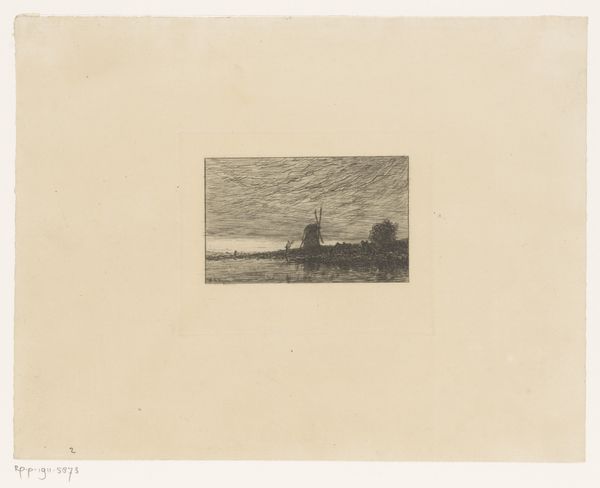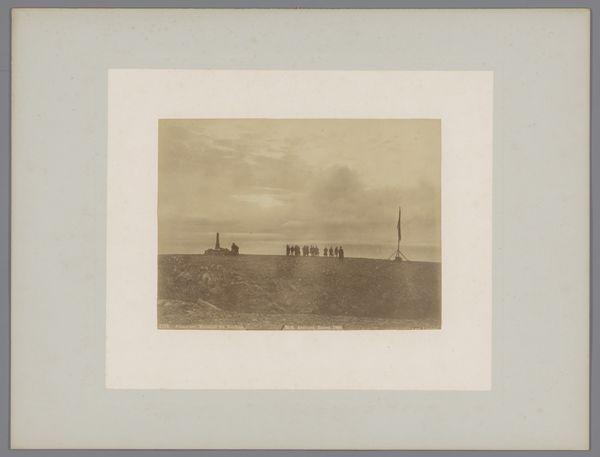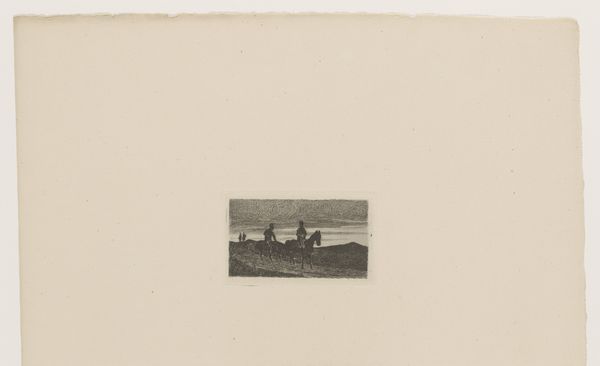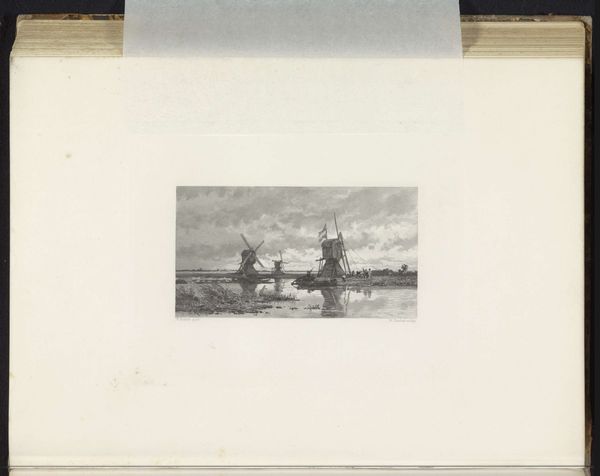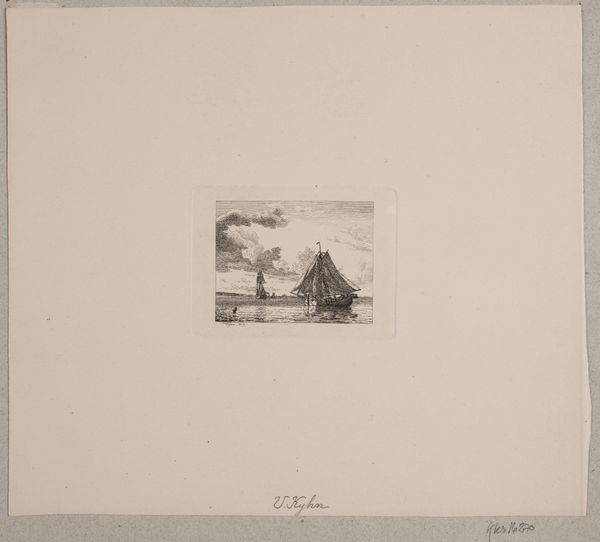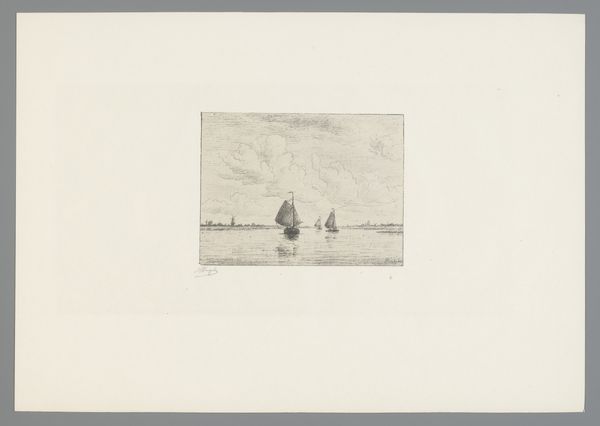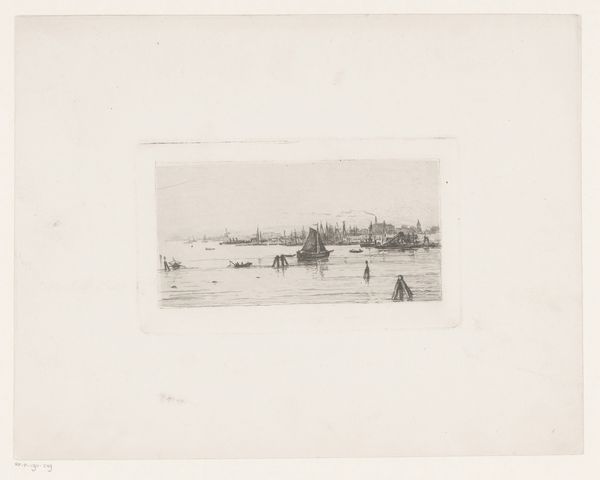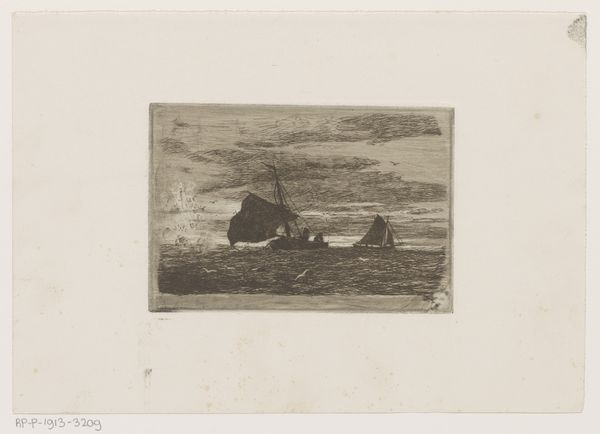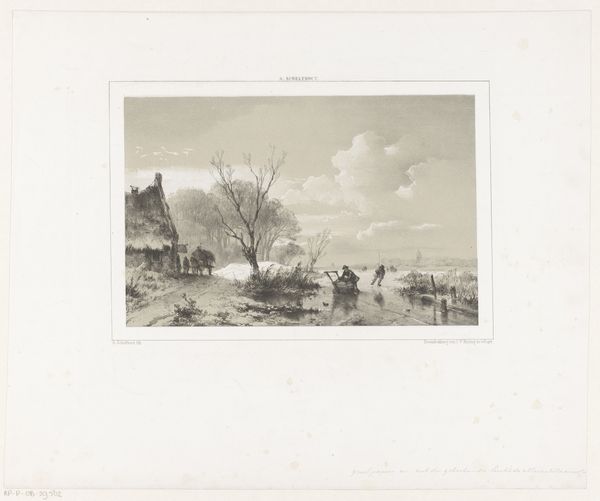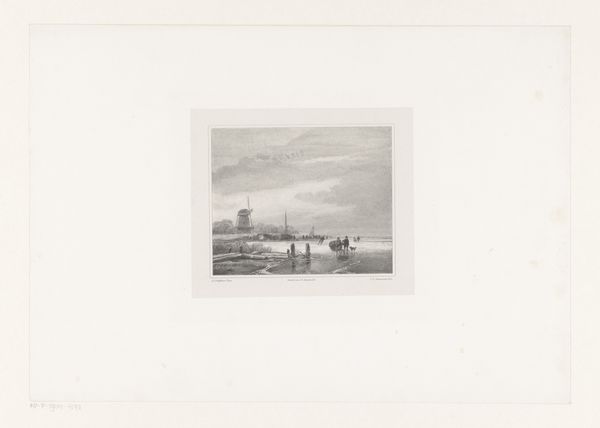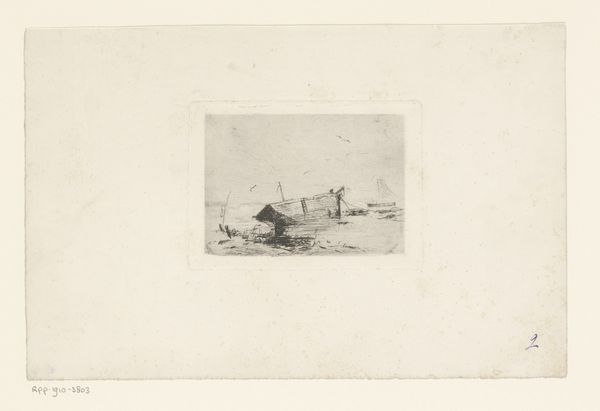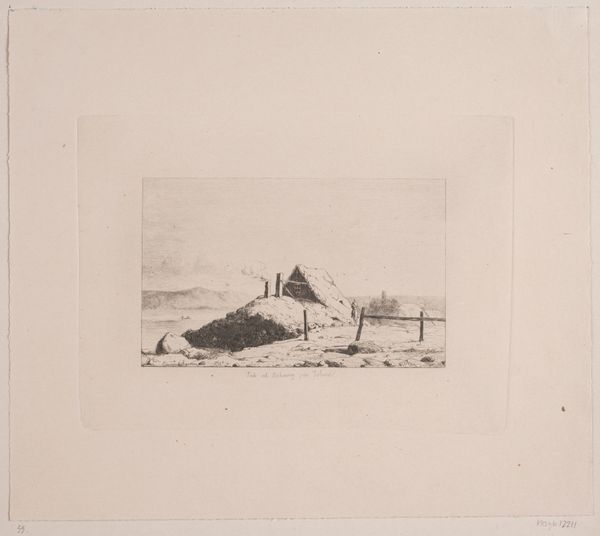
drawing, print, etching, paper, ink
#
drawing
# print
#
etching
#
landscape
#
paper
#
ink
#
genre-painting
#
realism
Dimensions: height 190 mm, width 240 mm
Copyright: Rijks Museum: Open Domain
Curator: There's a certain starkness to this image, wouldn't you say? The vast landscape contrasting with the intimacy of these two figures. Editor: Intimacy perhaps… or rather, labor. This is a drawing by Willem Steelink made between 1865 and 1870 called “Jan Adriaensz. Leeghwater, 1608." It seems so matter-of-fact. The etched lines almost reportage, yet, you sense the story runs deeper. Curator: Absolutely! Etching on paper with ink, gives the whole work this feel of a historical document. I read those lines of the landscape like memory traces. Jan Adriaensz. Leeghwater, though, I recognise the name but can't immediately place him. Editor: Well, Jan was a famous Dutch hydraulic engineer, particularly known for his role in land reclamation. This scene likely depicts some aspect of that work; note the equipment. Curator: Oh, fascinating. The man supervising and the labor in front... Is that about power structures embedded into nation-building? Maybe an allegory? It certainly feels a tad heavy given its size, and monochromatic color scale. Editor: That hierarchy feels deliberate, doesn’t it? Notice the dark clothing of the overseeing man which starkly contrasts the worker’s lighter tone and posture. It mirrors an enduring, almost archetypal division of labor we find repeating across history. Curator: Exactly! That contrast just sings to me of codified power. In many visual depictions of work and genre-painting you sense the artist's compassion, maybe almost protest. Do you think it also captures the psychological aspect of building a country - dreams turned to material? Editor: You’ve said it perfectly; it's like the symbolic weight of their endeavor, distilled in monochrome. Seeing them set against the wide horizon I feel reminded of old cultural and psychological symbols that link landscapes with national dreams, a future literally rising from water. Curator: It truly gets you thinking how much our landscapes bear within themselves. Thanks for guiding us a little to a deeper story behind Steelink’s craft! Editor: Indeed! And as always, thinking how symbolic visual elements in plain sight—like work depicted against nature— shape our perception even now!
Comments
No comments
Be the first to comment and join the conversation on the ultimate creative platform.
